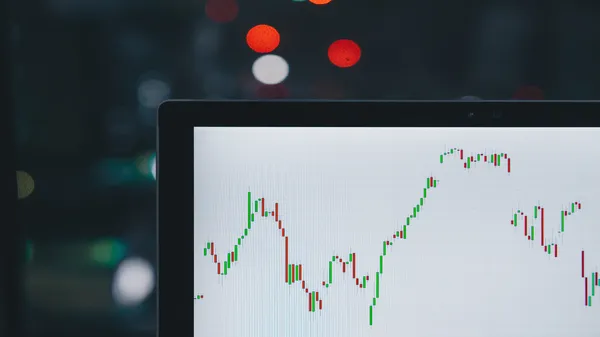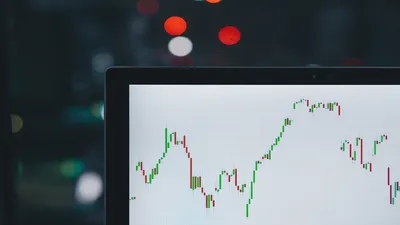Have you ever wondered where all those headlines about booming stocks or dramatic market ups and downs come from? The answer usually lies in one critical piece of the financial puzzle – the stock exchange. At its core, a stock exchange is not just a marketplace; it’s a dynamic hub of activity that drives the world of investments, connects companies with capital, and gives everyday investors a chance to participate in the growth of businesses. This guide will help you understand what a stock exchange is, how it operates, and why it plays such a central role in our modern economy.
Understanding the Basics: What Is a Stock Exchange?
A stock exchange is a formal organization that brings together buyers and sellers to trade shares of publicly listed companies. Think of it like a grand marketplace where instead of fruits or electronics, investors buy slices of a business. The role of a stock exchange goes far beyond just facilitating trades—it ensures that transactions are fair, regulated, and transparent.
Historically, the concept of a centralized trading floor emerged as a solution to the chaotic over-the-counter markets of the past. Today, many stock exchanges operate both physically and electronically, offering the convenience of digital trading while preserving the reputation and trust built over centuries.
The Role of a Stock Exchange in the Economy
Stock exchanges have a vital impact on both the economy and society. They do things like:
- Capital Formation for Companies: When companies decide to go public by listing on an exchange, they open up avenues for raising funds. This infusion of capital helps businesses expand, innovate, and create jobs.
- Investment Opportunities for Individuals: For regular investors, stock exchanges offer a platform to buy equity in well-established firms as well as emerging enterprises. It democratizes the process of wealth creation.
- Market Sentiment Indicator: The overall performance of a stock exchange often serves as a barometer of economic health. Bullish trends typically indicate economic optimism, while bearish trends might reflect broader economic challenges.
- Price Discovery Mechanism: Through the interaction of supply and demand, stock exchanges determine the market price of securities. This process, known as price discovery, not only helps investors decide when to buy or sell but also influences corporate decision-making.
How Do Stock Exchanges Work?
At a fundamental level, a stock exchange operates as a regulated auction market. Buyers compete to purchase shares by offering bids, while sellers look to secure the best price for their stocks by setting ask prices. Here are some of the key elements involved:
Trading Mechanisms
Modern stock exchanges use sophisticated electronic systems to match buy and sell orders. These systems typically rely on advanced algorithms that ensure rapid and accurate order matching. Two primary types of orders used in trading include:- Market Orders: These orders are executed immediately at the current market price.- Limit Orders: These let investors set a desired price at which they wish to buy or sell, allowing more control over the execution process.
Listing Requirements
For a company to trade on a stock exchange, it must meet specific criteria set by the exchange. These eligibility requirements include factors like minimum market capitalization, corporate governance practices, and financial disclosures. By enforcing these standards, exchanges help maintain market integrity and investor confidence.
Regulatory Oversight
Stock exchanges are subject to strict government regulation. Regulatory bodies ensure that trading is conducted fairly, that financial information is fully and accurately disclosed, and that investors are protected against fraud and manipulative activities. This regulatory framework is essential in fostering an environment of trust and reliability.
The Evolution of Stock Exchanges: From Trading Floors to Digital Platforms
Let’s take a quick journey back in time. Picture a bustling trading floor filled with loud voices, rapid hand signals, and frenzied activity. That was the traditional image of a stock exchange. Today, much of that action has moved online. Electronic trading platforms have revolutionized the way shares are bought and sold, enhancing speed and efficiency while allowing participation from anywhere in the world.
Despite this technological shift, the core principles remain unchanged. Transparency, fair pricing, and efficient capital allocation continue to be the cornerstones of what a stock exchange does. For those with a nostalgic memory of the old trading pit, many exchanges have preserved elements of those traditions while embracing modern technology.
Types of Stock Exchanges Around the World
When you think of a stock exchange, names like the New York Stock Exchange (NYSE) or NASDAQ might come to mind. However, there are numerous exchanges around the globe, each serving its particular market. Some prominent examples include:- NYSE (New York Stock Exchange): Known for its longstanding history and iconic trading floor, the NYSE lists many of the largest companies in the world.- NASDAQ: This exchange is known for high-tech and growth-oriented companies, often favoring electronic trading systems.- London Stock Exchange (LSE): A major player in the European market with a long legacy of financial excellence.- Tokyo Stock Exchange (TSE): The primary exchange in Japan, home to many of Asia’s largest companies.- Bombay Stock Exchange (BSE) and National Stock Exchange (NSE): These are two of India’s leading exchanges, opening up significant investment opportunities in one of the world’s fastest-growing economies.
The variety of exchanges highlights how different regions have tailored their markets to suit local economic conditions and investment needs, while global investors enjoy a rich spectrum of choices.
The Benefits of Investing Through Stock Exchanges
Investing through stock exchanges offers several compelling advantages:
1. Liquidity
One of the standout benefits is liquidity. In a liquid market, you can quickly buy or sell assets without causing a significant price impact. This is crucial for investors who need to access their funds or wish to adjust their portfolios in response to market developments.
2. Transparency and Fair Pricing
The regulated nature of stock exchanges ensures that all trades are executed fairly and transparently. Publicly available information and rigorous disclosure standards help create a level playing field where prices reflect real-time supply and demand.
3. Diversification
Exchanges offer access to a broad array of investment opportunities across industries and geographies. By diversifying your portfolio, you can manage risk and potentially stabilize returns over time. Whether you’re interested in blue-chip stocks or looking to invest in emerging sectors, stock exchanges are the gateway.
4. Opportunity for Wealth Creation
Owning a share of a company means having a stake in its potential growth. Over time, as companies develop and expand their earnings, share prices can appreciate significantly. Investors who have exercised patience and strategic thinking can see substantial wealth accumulation in their portfolios.
A Personal Anecdote: Discovering the World of Stocks
Consider the story of Arjun, a first-time investor from a small town. Growing up, Arjun listened to elders talk about the “golden era” of business but never really understood how the process of wealth creation worked. When he finally learned about stock exchanges, the idea of owning just a small piece of a large company fascinated him. With cautious optimism, Arjun started by investing in companies listed on the local exchange. Over time, as he gained confidence and built a diversified portfolio, he witnessed not only steady returns but also a deep understanding of the economic forces at play. His journey from a curious observer to an informed investor mirrors the transformation many experience when they embark on the world of stock investing.
The Mechanics of Price Discovery
Why do some stocks suddenly soar while others lag? The answer is in the intricate process of price discovery. This mechanism involves the continuous adjustment of prices as buyers and sellers negotiate based on their individual valuations of a company’s future prospects. It’s similar to an auction where the final bid reflects the combined judgment and expectations of the market participants. Investors use this information to gauge when to buy undervalued stocks or sell overvalued ones, which is why real-time data, news, and market trends all play a significant role in the trading process.
The Impact of Technology on Stock Exchanges
Technology has dramatically reshaped the landscape of stock exchanges. From high-frequency trading algorithms to real-time data feeds accessible on your smartphone, technology has not only made trading faster but has also drastically reduced costs. Here are a few ways technology continues to transform exchanges:
- Algorithmic Trading: Advanced algorithms can execute thousands of trades in a fraction of a second, optimizing price discovery and liquidity.
- Digital Trading Platforms: Investors now enjoy seamless access to global markets through intuitive platforms that offer robust research tools and market analyses.
- Blockchain and Security: Emerging technologies like blockchain are starting to influence how trades are recorded and settled, enhancing transparency and reducing the risk of fraud.
These technological advancements empower investors and contribute to a more efficient, inclusive market structure.
How to Get Started with Stock Exchange Investments
If you’re interested in dipping your toes into the world of stocks, here are some practical steps to help you begin your investment journey:
1. Educate Yourself
Before you invest, take time to understand the basics of stock markets, company fundamentals, and trading strategies. There are plenty of resources available—from online courses to books and webinars—that can equip you with the knowledge you need.
2. Open a Brokerage Account
To participate in the market, you’ll need a brokerage account. This account will serve as your gateway to buying and selling stocks on different exchanges. Choose a platform that suits your investing style, offers competitive fees, and provides quality research tools.
3. Start Small and Diversify
Begin with a modest investment, and gradually build a diversified portfolio that spreads risk across various sectors and asset classes. Diversification is key to managing market volatility and protecting your capital over the long term.
4. Follow the Market Trends
Stay updated with the latest market news and economic developments. Regular review of market indicators, sector performance, and corporate announcements can help you make informed trading decisions.
5. Consider Professional Guidance
If you’re unsure about where to start, consider consulting a financial advisor. Professionals can offer personalized advice that aligns with your financial goals and risk tolerance.
Final Thoughts: The Enduring Value of the Stock Exchange
The stock exchange is more than just a platform for buying and selling securities—it is a cornerstone of modern economic growth, innovation, and wealth creation. Whether you view it as a sophisticated machine for capital formation or a gateway to achieving personal financial goals, its role remains both critical and inspiring.
For those curious about investing, learning how stock exchanges work can be the first step toward unlocking the full potential of your savings and securing a brighter financial future. As markets continue to evolve with technology and new investment trends, the age-old principles of transparency, liquidity, and fair trade continue to drive the success of stock exchanges around the world.
In the end, understanding the mechanisms behind the stock exchange empowers you to make smarter investment choices and join millions of others who have turned market knowledge into lasting wealth. So next time you hear the term “stock exchange,” remember that behind every number, every tick of the digital board, lies a powerful story of opportunity and the relentless pursuit of progress.
Happy investing – may your journey in the world of stocks be both enlightening and prosperous!




.webp)

.webp)



.webp)
.webp)
.webp)
.png)